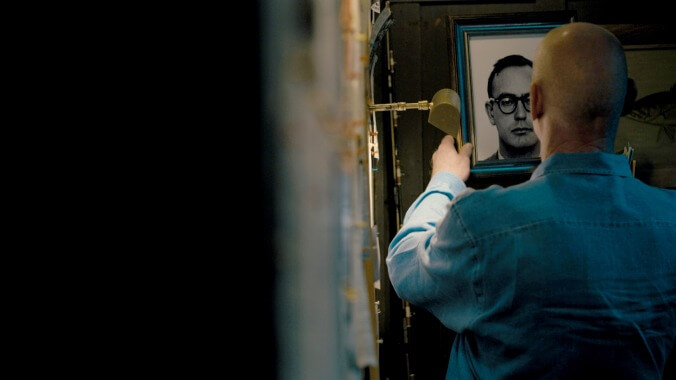It’s understandable why Gary L. Stewart started all of this. As he narrates the story to the camera at the beginning of FX’s new docuseries The Most Dangerous Animal Of All, he was adopted at three and a half months old, in a closed adoption that hid the names of his birth parents. And although his adoptive parents were loving and supportive—they even back him up in the obsessive hunt that takes up most of this four-part series—he claims that the “primal wound that adoptees have” has haunted him throughout his life, rendering him incapable of stable human relationships. So when his birth mother finally contacted him, Stewart was primed for a quest. And when she hinted that the story of his birth was “newsworthy?” Well, there was no turning back after that.
A good true crime documentary is about more than the usually tragic, oftentimes gruesome events that prompted the making of the series or film in the first place. And The Most Dangerous Animal Of All fulfills this requirement by exploring a theme that’s interrogated in many such projects: the nature of memory, of belief, and of truth itself. But, in a move that recalls Jean-Xavier de Lestrade’s cornerstone work The Staircase, director Kief Davidson adds a layer of transparency to his series by investigating not only the veracity of his subjects’ claims but also how those claims have hurt those around them.
Unlike The Staircase’s impassive vérité approach, The Most Dangerous Animal Of All indulges in every trick in the true crime filmmaker’s kit. Players in the saga are introduced with photographs pinned to cork boards by disembodied hands, and although the re-enactments in the series have higher production values than usual (and are blessedly free of dialogue), this technique inherently brings with it a whiff of cheesiness. Davidson’s primary visual influence for the series appears to be Errol Morris, whose influence looms over interview segments where Stewart looks directly into the camera in a static medium shot as he spins his increasingly outlandish personal mythology. The introduction of Stewart’s co-author, Susan Mustafa, to the series is more dramatic: Her dyed blond hair blows back and her black eyeliner narrows as she fires a handgun at a target in the Louisiana woods.
But the most notable directorial achievement in this series is its structure, establishing both doubt and certainty as it weaves together the basic beats of the Zodiac Killer mystery with Stewart’s stubborn insistence that his birth father was the infamous (and still unidentified) serial killer who terrorized the Bay Area in the late ’60s and early ’70s. Both the Zodiac mystery and what Stewart knows for sure about his birth father are wild tales full of shocking twists and colorful characters; Anton LaVey and his infamous Church of Satan even enter the picture at one point. But, for its part, The Most Dangerous Animal Of All declines to dig into the many other suspects who other researchers, both amateur and professional, have identified as the Zodiac Killer. That’s because this is really more of a story about Gary L. Stewart than the Zodiac himself, even when online sleuths enter the picture a lá the recent Don’t F*ck With Cats.
The psychology of why Stewart would want to believe such a horrifying thing about his lineage remains open to audience interpretation. But the mechanisms of his belief are presented—and then disassembled—one by one, not only responsibly but also compassionately. Stewart’s conviction is based on such scientifically shaky methods as handwriting analysis and amateur fingerprinting, and his need to cling to it has consequences that end up undermining his motivation to find his birth parents in the first place. But although Davidson is unafraid to wade into the messy emotions surrounding such a sensational story, he never paints his subjects as anything other than fallible people with complicated motivations.
It’s a basic human impulse to look for patterns where there are none, to try to make sense out of the senseless. You see it when Stewart points to random symbols on one of the infamous Zodiac ciphers, asserting with unshakable belief that the fact that one of those symbols appears in each of the cipher’s 17 columns must mean something. And indeed, as the investigation wears on, Stewart and Mustafa’s methods begin to resemble a paranormal investigation more than police work. Mustafa, who’s completely shocked by the results of the filmmakers’ investigation, is eventually given an opportunity to make things right. But the hole in Stewart’s soul may never be filled. When someone feels lost at sea, they’ll take shelter at any port available—even if it’s with a serial killer.



 Keep scrolling for more great stories from A.V. Club.
Keep scrolling for more great stories from A.V. Club.